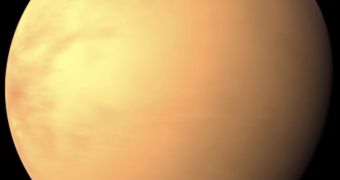Astronomers using the 3.6-meter telescope at the European Southern Observatory's (ESO) La Silla Observatory, in Chile, announce the discovery of a new super-Earth-class extrasolar planet, which may be able to support life as we know it.
According to measurements produced by the High Accuracy Radial Velocity Planet Searcher (HARPS) spectrograph on the telescope, the planets lies exactly at the edge of its parent star's habitable zone.
A super-Earth is an exoplanet that is larger and heavier than Earth, but only to a limited extent. They are nowhere near as large as a gas giant, meaning they are way smaller than Jupiter or Saturn.
This particular planet is called Gliese 163c, since it is the second planet from its parent star. Experts believe that temperatures on this world may allow for the existence of liquid water on its surface.
Though there is no way of knowing this with absolute certainty, all data available to date seem to point to this conclusion. “There are a wide range of structures and compositions that allow Gliese 163c to be a habitable planet,” explains Xavier Bonfils.
The expert holds an appointment with the Joseph Fourier University-Grenoble, in France. He made the statement in an email sent to Space. He adds that there are certain scenarios in which Gliese 163c is not a habitable planet. Therefore, more studies are needed before we can say anything for sure.
Bonfils says that he and his team made the discovery during a survey of more than 400 red dwarf stars. Gliese 163 was found around 50 light-years from Earth. Closer examinations revealed the existence of two exoplanets in its orbits. A third one was also hinted at, but not thoroughly confirmed.
HARPS data indicate that Gliese 163c is about 7 times the mass of Earth. This leaves researchers with only two possible options when it comes to determining the world's composition – it could either be a large rocky planet, like Earth, or a very small gas giant.
“We do not know for sure that it is a terrestrial planet. Planets of that mass regime can be terrestrial, ocean, or Neptune-like planets,” Bonfils went on to say. One thing that is important to know about this world is that it needs just 26 days to complete a full orbit around its star.
This means that it’s much closer to the star than Mercury is to the Sun for example. Granted, a red dwarf is not as hot as a yellow dwarf, but the short distance could mean that temperatures on the exoplanet are very high.

 14 DAY TRIAL //
14 DAY TRIAL //